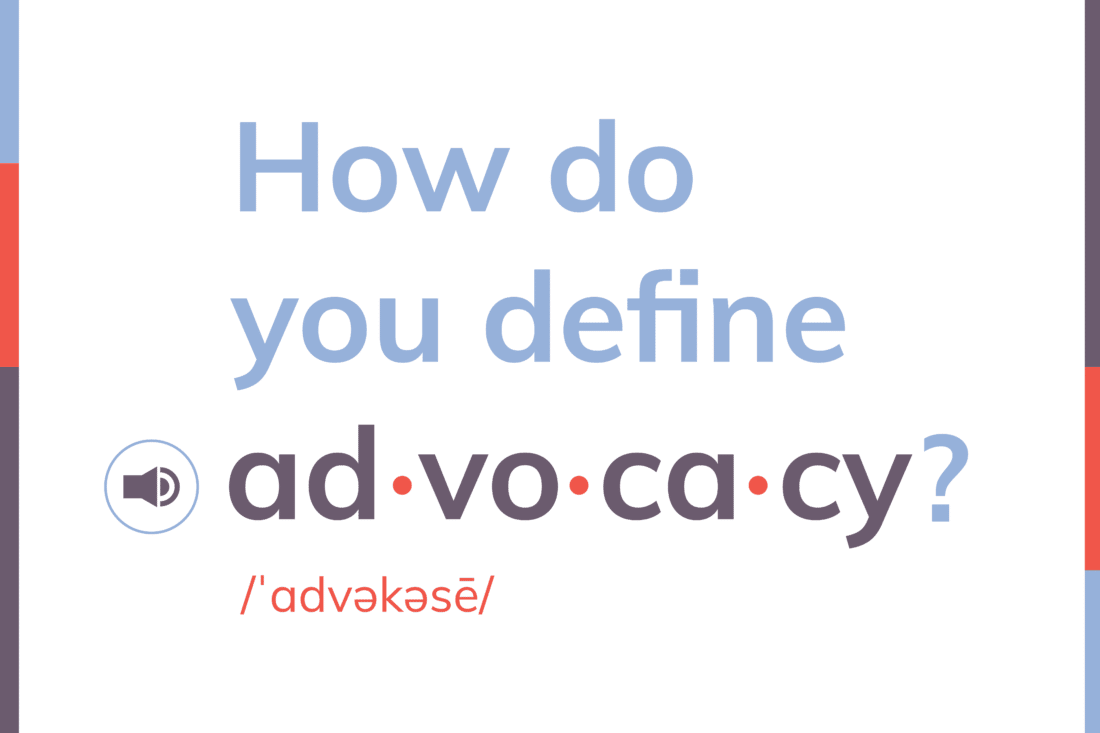
How do you define advocacy, anyway?
Co-written by Bianca Rosen, Senior Advocacy Strategist, and Clara Campbell, Director, Advocacy and Campaigns.
We hear this question a lot as the agency’s Advocacy and Campaigns team. And no, it’s not a dumb question.
There are many ways to define advocacy (more often than not, this evolves the more entrenched you are in the work). But here at Media Cause, we believe, at its core, advocacy is all about shifting the balance of power.
Mobilization raises awareness, engages, educates, and equips key audiences to be more powerful advocates and increase their involvement (in the short and long term). Campaigns create specificity around the intended goal and align multiple strategies and tactics under a unified, overarching strategy to achieve a specific, time-oriented goal.
We execute at all three levels to help our clients fulfill their missions.
Defining Advocacy and Mobilization
A common focus for advocacy campaigns is the legislative branch of government since that is the most direct avenue of access in a democratic environment.
But advocacy can focus on any number of factors, depending on the injustices and imbalances that need to be addressed. This requires building people power across sectors, from corporations to mom-and-pop shops, from grasstops to grassroots, from social media influencers and thought leaders to mass audiences. That’s where mobilization comes in.
Nonprofits need to hold both pieces of this puzzle—advocacy and mobilization—to move the ball forward for their constituents. Nonprofit advocacy, like fundraising, is (or should be) embedded in organizations’ DNA.
Nonprofits understand that to make a real impact for the cause they’re working on, they need to build movements and bring collective power to bear so they can influence public policy and create lasting, sea-shifting change on a higher level.
Think about any of the causes you care about. Chances are all of them involve advocacy.
At the heart of advocacy is what we refer to as the three P’s: Power, Pressure/Persuasion, and People—and they are essential to our approach to this work.
Let’s dive into all three advocacy pillars.
Power
At its core, advocacy is about shifting the balance of power. Movements and nonprofits must run disciplined campaigns focused on actually moving the needle forward for their community.
As the writers of Prisms of the People point out, “…power is not a function of organizational resources alone, it is a function of the breadth of strategic choices an organization has to navigate political uncertainty.”
Movements and organizations can build power by tactfully expanding the strategic options available to them and which levers to pull at what moment.
And at the end of a campaign, as movement leaders, we need to be brave enough to honestly assess whether we won. We acknowledge the things that were—and the things that weren’t—in our control.
But we also ask the most important question: did this campaign help us build power, and are we better positioned to win the next round?
Ultimately, this pillar relies on building up the organizing capacity of the movement’s grassroots.
We did this for the International Civil Society Action Network, who asked us to help them unite women peacebuilders to amplify their power in order to decrease violence on a local and global scale.
We developed a Campaign Activation Kit and a digital hub—She Builds Peace—to provide women peacebuilders and supporters with everything they need to cultivate this collective power. These resources included an overview of the movement’s goals and challenges, calls-to-action, connection points, and campaign assets so that all peacebuilders were equipped with the tools needed to activate more women.
In turn, this created a foundation for future wins with a well-organized and unified constituency.
Pressure/Persuasion
To cultivate power, we need compelling messaging that influences our campaign’s targets and drives our supporters to take action.
Our clients know their issues, and we know how to translate that into powerful and persuasive communications.
But the best argument doesn’t always win—which is why we help them bring public pressure to their side.
In the case of the Center for American Progress, we conducted in-depth audience and market research to craft this targeted messaging.
We then launched multi-channel media campaigns to get as many eyeballs as possible to pressure Congress members to pass the For the People Act.
This effort resulted in 3.7 million impressions in six key states, 9,848 petition signatures, and 47,000 clicks to the petition landing page, demonstrating the power of this persuasive messaging.
People
Sometimes advocacy for nonprofits is a matter of the many, and sometimes it’s a matter of the few— just because an organization has a large file or an impressive rolodex of supporters does not necessarily translate into power and vice versa. It’s the action that group of people take together.
Either way, we have to understand the dynamics of people power, from grassroots to grasstops.
Movements must grow and mobilize their networks and develop the groundswell they need to move their cause forward.
We tapped into the power of the many for Tipping Point Community’s All In campaign by building support for solutions to homelessness in San Francisco.
We utilized storytelling and aspirational communications to paint a picture of what a City with empathy for our unhoused neighbors could look like and a roadmap for how we actualize this by housing our fellow San Franciscans.
While all these principles are critical, they will not—and should not—be applied in the same way across advocacy campaigns.
That’s why organizations and movements need to tap into their constituency’s power, craft compelling messaging that unites these people, and assemble a thoughtful team of people to weave together these elements based on the goal of your advocacy campaign.
We’d love to be part of that thoughtful team. Learn more about our advocacy capabilities or contact us today.